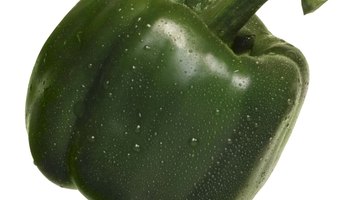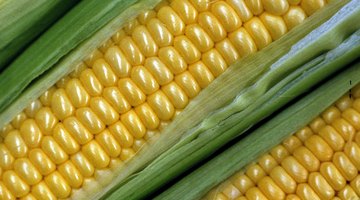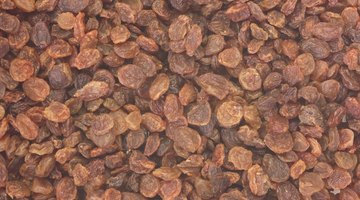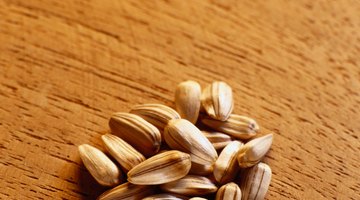Can Toddlers Eat Dates?
Dates are certified by the American Heart Association, which means that they meet the criteria for being a heart-healthy food low in saturated fat and cholesterol.
They also contain many of the essential nutrients your toddler needs for healthy growth. It's safe for your toddler to eat dates, but you should take certain precautions.
Nutrients
One whole date contains 66 calories and no fat.
One date also contains 1.6 grams of fiber, a nutrient that helps keep your toddler's digestive system working properly and prevents constipation. One date supplies 0.22 milligrams of the 7 milligrams of iron your toddler needs each day. Iron helps your toddler make red blood cells, which move oxygen through his body.
Your toddler gets 15 milligrams of bone-building calcium and 167 milligrams of potassium from a whole date. One date also contains small amounts of folate, niacin and vitamin A.
Choking Risk
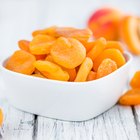
Are Dried Apricots Safe for Toddlers?
Learn More
A whole date can be quite large, which poses a choking risk for your toddler.
Always cut dates up into small pieces so they don't get stuck in your toddler's windpipe.
Pieces about the size of a raisin are appropriate for a toddler, BabyCenter notes. Don't leave your toddler alone while he is eating. Have him sit still while he eats dates or any other food to reduce the chance that he will choke.
Sulfites
Dried fruits, including dates, are often packaged with sulfites. Sulfites help extend the shelf life of the product and prevent mold from growing on the fruit. According to a 2004 study published in the "Journal of Food Protection," sulfites can cause negative health reactions in some people. If your toddler has been diagnosed with asthma, the sulfites in dried dates can exacerbate his symptoms.
Consuming foods that contain sulfites can cause mild wheezing, but in rare instances, it can also cause anaphylaxis.
Anaphylaxis causes the airways to close and can be life-threatening. If your toddler has asthma, ask his pediatrician whether dried fruit is safe for him.
Suggestions

Are Mushrooms Safe for Toddlers?
Learn More
Look for all-natural dates because they don't contain sulfites. These are a healthy option if your toddler likes dates but has asthma. Because dates are so sticky, brush your toddler's teeth shortly after he's done eating them.
Offer dates as part of a meal or snack because the other foods will help clean the date particles off his teeth, which reduces his risk of cavities. Sprinkle chopped dates into a bowl of oatmeal or bake them into your toddler's favorite bread or muffins. Stir chopped dates into plain yogurt to add natural sweetness and nutrition.
Related Articles
- United States Department of Agriculture: National Nutrient Database for Standard Reference
- BabyCenter: When Can My Baby Eat Raisins and Dried Fruit?
- BabyCenter: 10 Nutrients that Every Child Needs
- American Heart Association: Heart-Check Mark: Products Ordered By Category
- KidsHealth: Iron and Your Child


